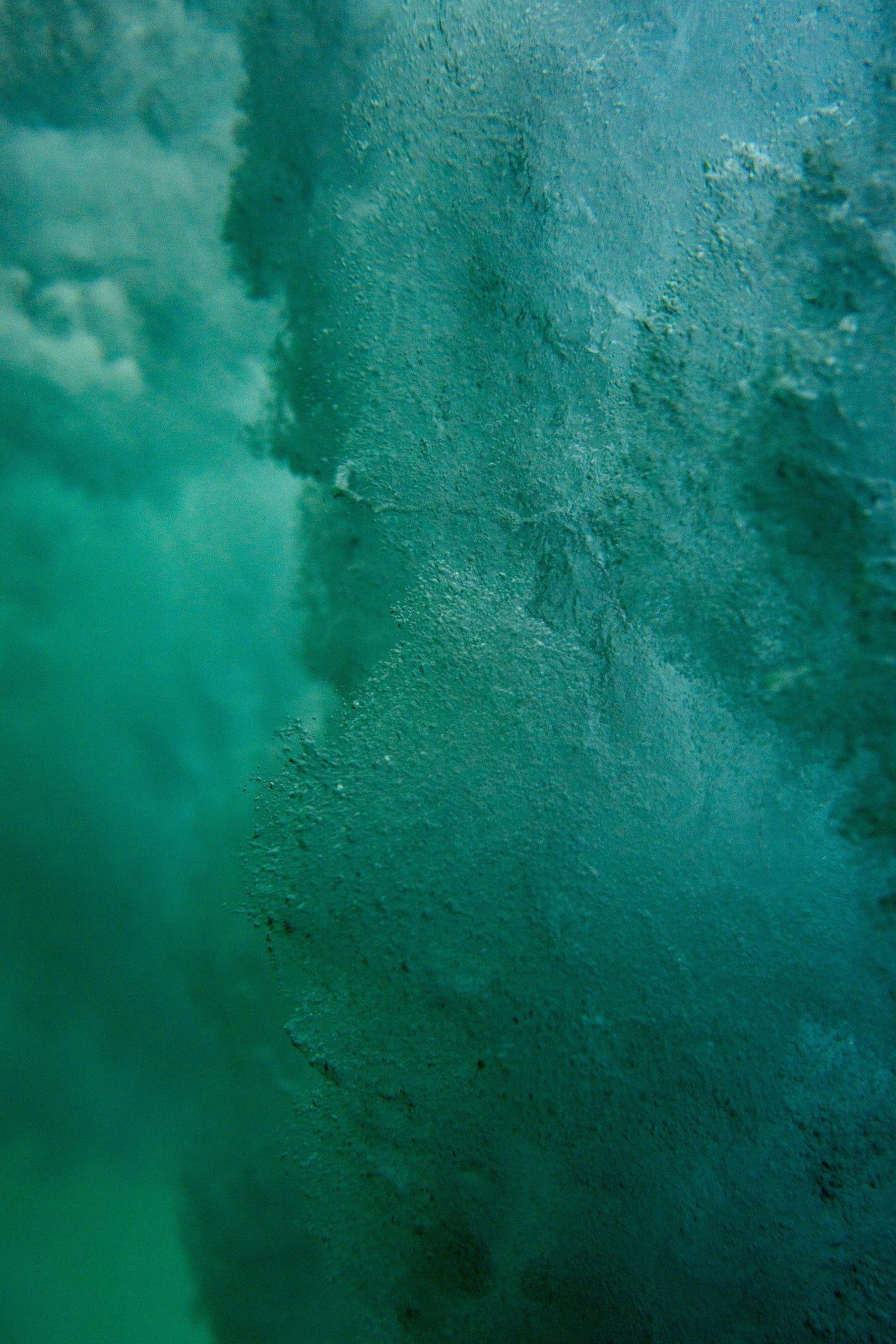Where does the sound of breaking waves come from?
The foam trailing behind a breaking wave can disappear in seconds or linger for minutes, depending on what’s dissolved in the water around you. Sometimes whitewater vanishes almost instantly after the turbulence settles. Other times, patches of foam drift around the lineup long after the set has passed, collecting in streaks along convergence zones and easy-to-paddle rips.
When a wave’s lip meets its trough, the plunging water traps massive volumes of air and drags it below the surface. Turbulent shearing tears these air pockets into progressively smaller bubbles. A single breaking wave can inject billions of bubbles into the water column, ranging from millimeters across down to microscopic sizes.

The thinner a bubble wall gets, the more unstable it becomes. Surface tension - the molecular attraction between water molecules - creates a pressure difference across the wall, with higher pressure inside pushing out. This difference increases dramatically as bubbles shrink, which means the smallest bubbles face the most force trying to collapse them. A bubble wall is just a few molecules thick, and in pure water, this physics would lead to near-instant destruction.
However, seawater isn’t pure. Dissolved organic compounds from phytoplankton, bacteria, and decaying matter stabilize these fragile structures by arranging themselves at the air-water interface. These surfactant molecules reinforce the bubble wall and can extend its lifetime from milliseconds to minutes depending on concentration. Nutrient-rich coastal waters often maintain foam long after clear offshore conditions would have let it vanish.
Below the surface, bubbles sort themselves by size as they rise. Larger bubbles ascend quickly while smaller ones drift upward more slowly, and the smallest may dissolve entirely before completing the journey. Deep, powerful breaks inject bubbles far enough down that the water column becomes a filter, with only the largest and most stable bubbles reaching the surface. The gentler mushburgers (technical term) release most of their air near the top, where it quickly accumulates into visible foam.
Each bubble trapped underwater oscillates at its own frequency, determined primarily by size according to the Minnaert resonance condition. Larger bubbles vibrate at lower frequencies while smaller ones ring at higher pitches. A bubble with a one-millimeter diameter oscillates around 6,000 Hz while a ten-millimeter bubble resonates near 600 Hz. The hissing, crackling sound of whitewater comes from thousands of these bubbles ringing simultaneously, each contributing its characteristic frequency to create the acoustic signature of breaking waves.

Wave energy dissipates through this underwater bubble field in ways both obvious and subtle. The sound itself carries energy away, and researchers have begun using underwater acoustics to estimate wave power since larger, more energetic waves create more bubbles across a wider size range. But most energy converts to heat through viscous forces as bubble walls oscillate through the water. Breaking air into tiny bubbles creates enormous amounts of new surface area, and surface tension means work must be done to create that interface. This pulls from the wave’s energy budget before a single bubble even starts rising toward the surface.
What actually makes it to the surface tells you something about what got mixed in. Clean water produces white foam from light scattering off bubble surfaces. Brown or tan coloring indicates suspended sediment, common after storms. Green-tinged foam signals phytoplankton concentrations, while yellow or brown comes from dissolved organic matter. The visible foam is the surface expression of billions of bubbles still working their way up through the water column below.
Further Reading:


Too cool 🌊
Thomas Dietzel was a musician from New Orleans. He is survived by his wife, Tonya Larissa Dietzel and his daughter Mela Dietzel. A whitewater rafting enthusiast, he died on September 4th, 2025, in a solo kayaking trip in Colorado.